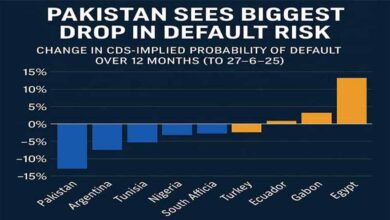ISLAMABAD: Starting July 1, the federal government plans to reduce electricity prices nationwide and has formally submitted a petition to the National Electric Power Regulatory Authority (Nepra), seeking a Rs1.15 per unit cut in power tariffs.
This reduction will apply to all consumer categories except for lifeline domestic users, who are already receiving significant subsidies. The government has recommended no changes to tariffs for the first two slabs of lifeline consumers.
Nepra has scheduled a public hearing on July 1 to finalise the process before officially notifying and implementing the revised rates.
According to the petition, lifeline consumers using up to 50 units per month will continue to pay Rs3.95 per unit, while those using 50 to 100 units will still be charged Rs7.74 per unit.
For all other consumers, including domestic (non-lifeline), commercial, industrial, agricultural, and bulk users, a flat reduction of Rs1.15 per unit is proposed for FY2025-26. The percentage of relief will vary, ranging from 3% to 10%, depending on current rates.
For instance:
• Protected domestic users (1–100 units) will now pay Rs10.54 per unit, down from Rs11.69, a 9.8% drop.
• The 101–200 units slab for protected consumers will be Rs13.01, compared to Rs14.16, a reduction of 8%.
• Non-protected consumers using more than 200 units will pay Rs23.44 for the first 100 units, down from Rs23.59 — a cut of nearly 5%.
For all other categories, the reduction remains a flat Rs1.15 per unit, equating to a 3–4% decrease.
The average electricity tariff will now stand at Rs31.60 per unit, down from Rs32.75.
These revisions are based on Nepra’s tariff decisions for FY2025-26, incorporating power purchase costs, revised subsidy allocations, and commitments under the IMF agreement.
Nepra had earlier set a national average tariff of Rs34 per unit for FY2025-26, down from Rs35.50 for the current year.
The proposed tariff reflects a 12.9% decrease in federal subsidies — now Rs1.04 trillion for FY2025-26, compared to Rs1.19 trillion in FY2024-25. Key changes in subsidies include:
• Tariff differential subsidy (TDS) for Discos: Down to Rs249.14bn from Rs276bn.
• Balochistan tubewells: Reduced to Rs4bn, from Rs9.5bn.
• Merged districts of KP and former FATA: Cut to Rs40bn from Rs65bn (down 38%).
• K-Electric: Reduced by 28%, from Rs174bn to Rs125bn.
• AJK: TDS lowered by 31.5%, from Rs108bn to Rs74bn.
• Tribal areas: Cut by 39%, from Rs65bn to Rs40bn.
The Pakistan Energy Resolving Fund, aimed at timely payments to Chinese IPPs, retains a stable allocation of Rs48bn. Meanwhile, Rs400bn has been earmarked in the budget for other subsidies — slightly higher than the previous year’s Rs394bn.
The Power Division emphasised that the tariff proposal aligns with the National Electricity Policy 2021, which advocates for cost recovery and sectoral financial sustainability through efficient tariff structures.
The new uniform tariff proposal, based on Nepra’s July 13, 2024 determination (notified on July 14), was presented to the federal cabinet on June 28. Approval is expected without change, as the uniform tariff supports the government’s economic and social goals.
The government also affirmed it will continue a uniform consumer-end tariff for both K-Electric and other Discos, even after privatisation, using direct or indirect subsidies. Accordingly, K-Electric’s applicable uniform variable charge will be adjusted to meet its revenue needs, considering proposed subsidies and cross-subsidies.







